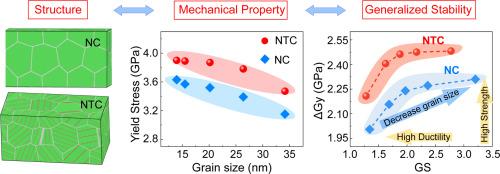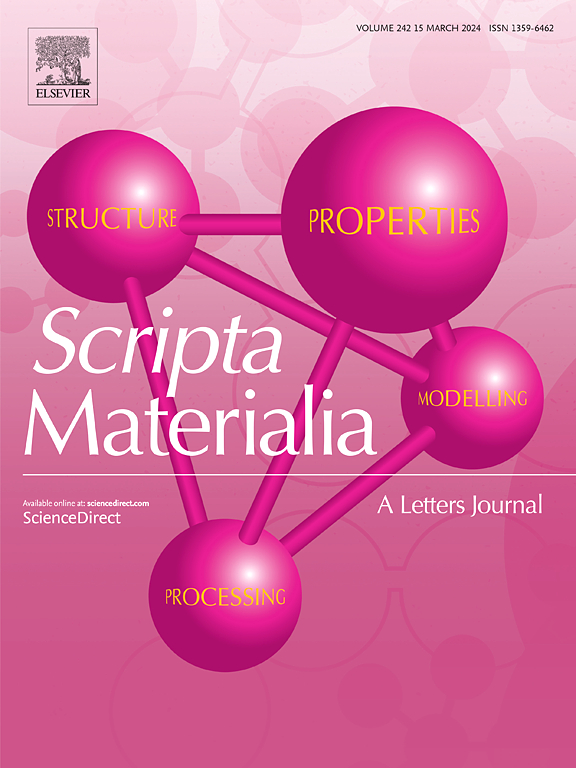Thermo-kinetic origin for strength-ductility trade-off phenomena
IF 5.3
2区 材料科学
Q2 MATERIALS SCIENCE, MULTIDISCIPLINARY
引用次数: 0
Abstract
Strength-ductility trade-off has been a long-standing dilemma in materials science, greatly limit the potential applications of various structural materials. Here, we explore the underlying physics of such paradox based on recently proposed generalized stability (GS) criterion. We propose that the strength-ductility trade-off relationship physically dominated by the correlation between thermodynamics driving force (ΔG) and the kinetic energy barrier (Q). Thus, we establish an intrinsic connection between GS criterion and mechanical properties, that high ΔG correspond to high strength, while small GS values associate with high plasticity. Additionally, we find that a new thermo-kinetic correlation ensuring sufficiently slow and steady dislocation slip in nano-twinned crystalline and gradient nanocrystalline, which break the original thermo-kinetic correlation for dislocation slip in nanocrystalline and achieve an excellent strength-ductility balance. This offers a quantitative method to optimize the strength and ductility of metal materials by thermo-kinetic properties.

强度-电导率折衷现象的热动力学起源
强度-电导率权衡一直是材料科学领域长期存在的难题,极大地限制了各种结构材料的潜在应用。在此,我们基于最近提出的广义稳定性(GS)准则,探讨了这种悖论的基本物理学原理。我们提出,强度-电导率权衡关系受热力学驱动力(ΔG)和动能势垒(Q)之间相关性的物理支配。因此,我们建立了 GS 标准与机械性能之间的内在联系,即高ΔG 对应于高强度,而小 GS 值则与高塑性相关。此外,我们还发现了一种新的热动力学相关性,可确保纳米孪晶和梯度纳米晶中的位错滑移足够缓慢和稳定,从而打破了纳米晶中位错滑移的原有热动力学相关性,实现了极佳的强度-电导率平衡。这为通过热动力学特性优化金属材料的强度和延展性提供了一种定量方法。
本文章由计算机程序翻译,如有差异,请以英文原文为准。
求助全文
约1分钟内获得全文
求助全文
来源期刊

Scripta Materialia
工程技术-材料科学:综合
CiteScore
11.40
自引率
5.00%
发文量
581
审稿时长
34 days
期刊介绍:
Scripta Materialia is a LETTERS journal of Acta Materialia, providing a forum for the rapid publication of short communications on the relationship between the structure and the properties of inorganic materials. The emphasis is on originality rather than incremental research. Short reports on the development of materials with novel or substantially improved properties are also welcomed. Emphasis is on either the functional or mechanical behavior of metals, ceramics and semiconductors at all length scales.
 求助内容:
求助内容: 应助结果提醒方式:
应助结果提醒方式:


